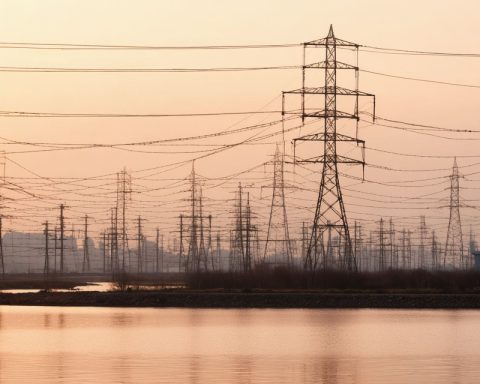- Hydrogen is a promising renewable energy source but faces significant challenges in extraction and utilization.
- Despite being the universe’s most abundant element, hydrogen is not readily available in pure form and current extraction methods, like electrolysis, require high energy inputs.
- The shift to a hydrogen-based economy necessitates extensive changes to existing infrastructure, including pipelines and storage, posing logistical and financial hurdles.
- Public perception, influenced by historical events like the Hindenburg disaster, remains a barrier, necessitating education on modern safety innovations.
- Economic viability is uncertain, as further cost reductions and technological advancements are required to make hydrogen competitive with other energy sources.
- Collaboration and innovation in green hydrogen production and public engagement are essential for overcoming these obstacles and realizing hydrogen’s full potential.
Hydrogen stands poised as the darling of the renewable energy world, promising a cleaner, more sustainable future. Yet, below the gleaming surface of its potential lies a series of intricate challenges. As we explore the untapped realm of hydrogen, it becomes essential to understand what stands between us and a world powered by this abundant element.
Raw Resources: More Complicated Than Meets the Eye
The allure of hydrogen stems from its perceived simplicity; it is the most abundant element in the universe. However, its abundance is deceptive. Most hydrogen on Earth exists bound in compounds like water (H₂O) or organic materials. Extracting pure hydrogen presents notable difficulties. Current methods, such as electrolysis, demand considerable amounts of energy, often sourced from non-renewable means. This paradox of needing power to create power underscores one of hydrogen’s greatest logistical hurdles.
Infrastructure: The Invisible Web
Imagining a hydrogen-fueled economy involves envisioning a world where every car, bus, and factory gets its energy from this elusive source. Yet, achieving this dream involves more than just changing the fuel. It requires overhauling infrastructure from the ground up. Pipelines, storage facilities, and distribution networks tailored for fossil fuels need a costly transformation to handle hydrogen efficiently. Hydrogen, being a tiny molecule, also tends to leak. This necessitates airtight solutions to maintain efficiency and safety.
Public Perception: The Unseen Battle
Despite the technological advances, another significant hurdle remains: gaining public trust. Scenes from history, like the iconic Hindenburg disaster, linger in the collective consciousness, casting shadows over hydrogen’s potential. Educating the public on modern safety measures and innovations is crucial to dispelling fears and fostering acceptance of hydrogen technologies in everyday life.
Cost Versus Benefit: The Economic Equation
Deciphering the economic feasibility of hydrogen remains complex. While costs for renewable energies like solar have plummeted, making hydrogen competitive requires further strides. Innovations in production methods and scaling commercial applications hold promise, but until then, the economic argument for hydrogen teeters on a precarious edge.
The Clear Path Forward
Tackling these challenges is no small feat, yet the potential rewards are immense. Innovations in green hydrogen production, stark improvements in infrastructure, and deliberate public engagement strategies can steer this revolution. Collaborative efforts across sectors must drive these changes because the stakes—our environment, economy, and energy independence—are too high to ignore.
In embracing hydrogen’s promise, we may ultimately redefine how the world powers its future, turning today’s challenges into tomorrow’s victories.
The Hydrogen Revolution: Unlocking the Future of Energy
Exploring the Full Potential of Hydrogen
Hydrogen is increasingly being hailed as a cornerstone of future energy strategies, thanks to its potential to offer a clean, renewable, and abundant energy source. However, as with any transformative technology, fully harnessing hydrogen’s potential will require overcoming several significant hurdles.
Raw Resources: Extraction Challenges
While hydrogen is the most abundant element in the universe, it rarely exists in its pure form on Earth. Extracting hydrogen typically involves splitting it from water molecules through electrolysis or deriving it from hydrocarbons, both of which require significant energy inputs. Electrolysis is currently the most sustainable method when powered by renewable energy sources like solar or wind, which diminishes the carbon footprint. However, this process remains costly and requires technological advancements to increase efficiency and reduce energy consumption.
Infrastructure Overhaul Necessary
Transitioning to a hydrogen-based economy necessitates heavy investments in infrastructure. Current systems are tailored to fossil fuels, requiring upgrades to handle hydrogen, which is a small, highly flammable molecule prone to leakage. This requires development in:
1. Pipelines: Need to be retrofitted with advanced materials to prevent leaks.
2. Storage: Innovations in materials like carbon fiber and alloys are crucial for safe, efficient storage solutions.
3. Distribution: Hydrogen refueling stations for vehicles and industries must be widely available to ensure adoption.
Public Perception: Shifting Narratives
Public perception remains a considerable barrier. Historical incidents like the Hindenburg disaster overshadow modern safety measures. Effective public education campaigns and demonstration projects highlighting safe hydrogen use are essential to change the narrative and increase public acceptance.
Economic Viability: Balancing Costs and Benefits
The economics of hydrogen production, storage, and distribution currently present barriers to widespread adoption. While the cost of producing green hydrogen (via renewable energy sources) is decreasing, especially with technological advancements and economies of scale, continued investment is necessary. Incentives for research and subsidies could accelerate progress.
How-To: Boosting Hydrogen Acceptance and Usage
1. Invest in R&D: Focus on improving electrolysis technologies to make green hydrogen production more economically viable.
2. Public Awareness Campaigns: Initiate campaigns showcasing successful hydrogen projects and emphasize safety advances.
3. Policy Support: Governments can provide subsidies, tax incentives, and grants for hydrogen research and infrastructure development.
4. Collaboration: Cross-sector partnerships will be vital. Industries, governments, and academic institutions need to collaborate to address challenges comprehensively.
Market Forecast: The Hydrogen Economy
The global hydrogen market is expected to grow robustly over the next decade, with applications ranging from transportation to industrial use and power generation. By 2030, hydrogen could supply 10-20% of global energy needs, significantly reducing greenhouse gas emissions and paving the way for a sustainable energy future.
Quick Tips for Stakeholders:
– For Governments: Implement policies that support hydrogen technologies and infrastructure investments.
– For Industries: Explore pilot projects and partnerships in hydrogen applications.
– For Researchers: Focus on scalable, efficient hydrogen production methods.
– For Educators and Communicators: Develop programs to educate the public on hydrogen’s benefits and safety improvements.
The Promise of Hydrogen: Charting a Sustainable Path
Despite the challenges, the potential of hydrogen to redefine energy landscapes is immense. By prioritizing innovation in production technologies, building robust infrastructure, and enhancing public engagement, hydrogen can become a pivotal element in decarbonizing our energy systems.
For more detailed insights into hydrogen and renewable energy technologies, visit the International Energy Agency (IEA) for comprehensive resources and industry updates.















